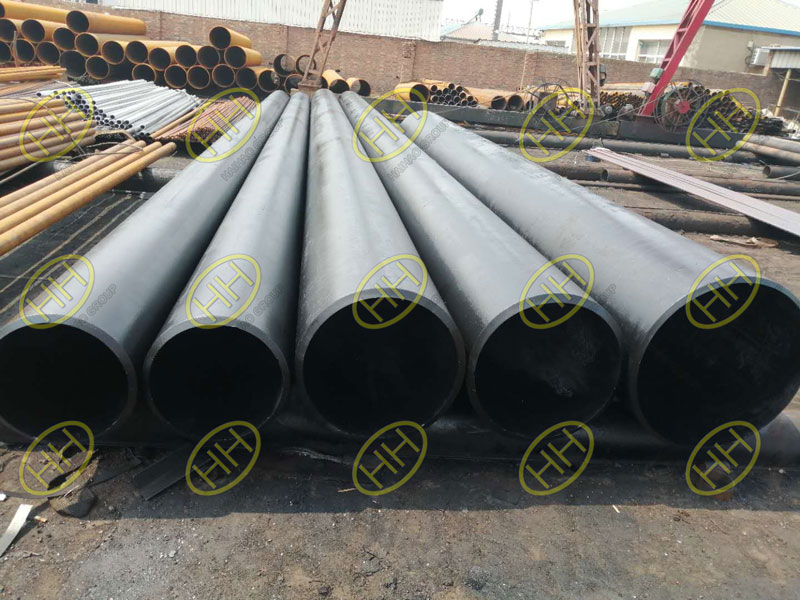Two common application methods for surface hardening of thick-walled steel tubes
Surface hardening of thick-walled steel tubes is a method of local quenching, in which a certain depth of hardened layer is obtained on the surface of the workpiece, while the core remains unquenched. When the surface is quenched, the surface of the workpiece is heated quickly, and the quenching temperature is reached very quickly. Before the heat reaches the core of the workpiece, it has been cooled to achieve the effect of local quenching. The surface of the workpiece should be cleaned carefully to remove burr, iron filings and oil stains. The surface condition will obviously affect the quenching effect.

ASTM A106 seamless steel pipes
There are two common surface quenching methods for thick-walled steel tubes:
(1) induction quenching
In an induction coil through a certain frequency of alternating current (divided into high frequency, intermediate frequency and power frequency three), so that the induction coil around the same frequency of alternating magnetic field, the workpiece placed in the magnetic field will produce the same frequency with the induction coil, the direction of the opposite induction current, known as eddy current. Due to the skin effect, the eddy current is mainly concentrated on the surface of the workpiece. The resistance heat generated by the eddy current rapidly heats the surface of the workpiece to the quenching temperature, and then spray water on the parts to harden the surface of the workpiece. The thickness of the quenched layer becomes thinner with the increase of frequency. This is known as induction surface hardening. The heating speed is extremely fast. The surface temperature of the workpiece can be raised to 800 ~ 1000℃ in just a few seconds in the surface layer that the vortex passes through, but the heart does not have enough time to heat up. Therefore, the principle of induction quenching is to produce eddy current on the workpiece surface by electromagnetic induction to heat the surface of the workpiece, and then fast cooling, so that the surface hardening technology. The actual application current frequency ranges from 50Hz to 500KHz.Among them, 50Hz ~ 10KHz is the intermediate frequency, which is mainly composed of thyristor (thyristor). It is used to quench the depth of the hardened layer, such as rollers.10KHz ~ 50KHz is the super audio frequency, with IGBT(insulated gate bipolar transistor is composed of BJT(bipolar triode) and MOS(insulated gate type field effect tube) composite voltage-driven power semiconductor device) as the main, the most widely used; Above 50KHz is called high frequency, applied to fine workpiece processing, mainly to the electron tube, useful MOS tube.
(2) flame quenching
The process of austenitizing and quenching a range of workpiece surfaces heated by a domestic flame in a thick-walled steel pipe plant. In order to achieve surface quenching, the heat supplied by the flame to the surface must be greater than the heat transferred from the surface to the core and dissipated. The temperature of oxyacetylene flame is the highest, which can reach 3100℃.And the gas-oxygen mixture; Gas-oxygen mixture; Propane-oxygen mixture, in which the flame temperature of propane-oxygen mixture is the lowest, 2650℃.Advantages are simple equipment, easy to operate, low cost, not limited by the size of the workpiece, no oxidation and decarbonization of the surface after quenching, small deformation. The disadvantage is easy to overheat, limited by the surface shape, the heating gas has the potential to explode.
